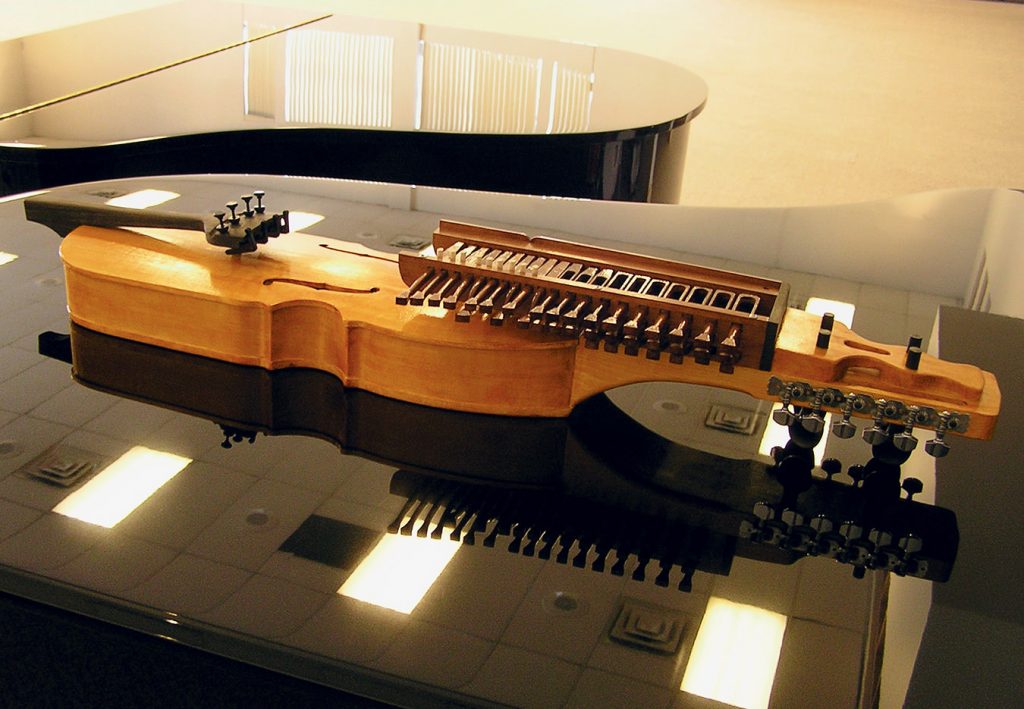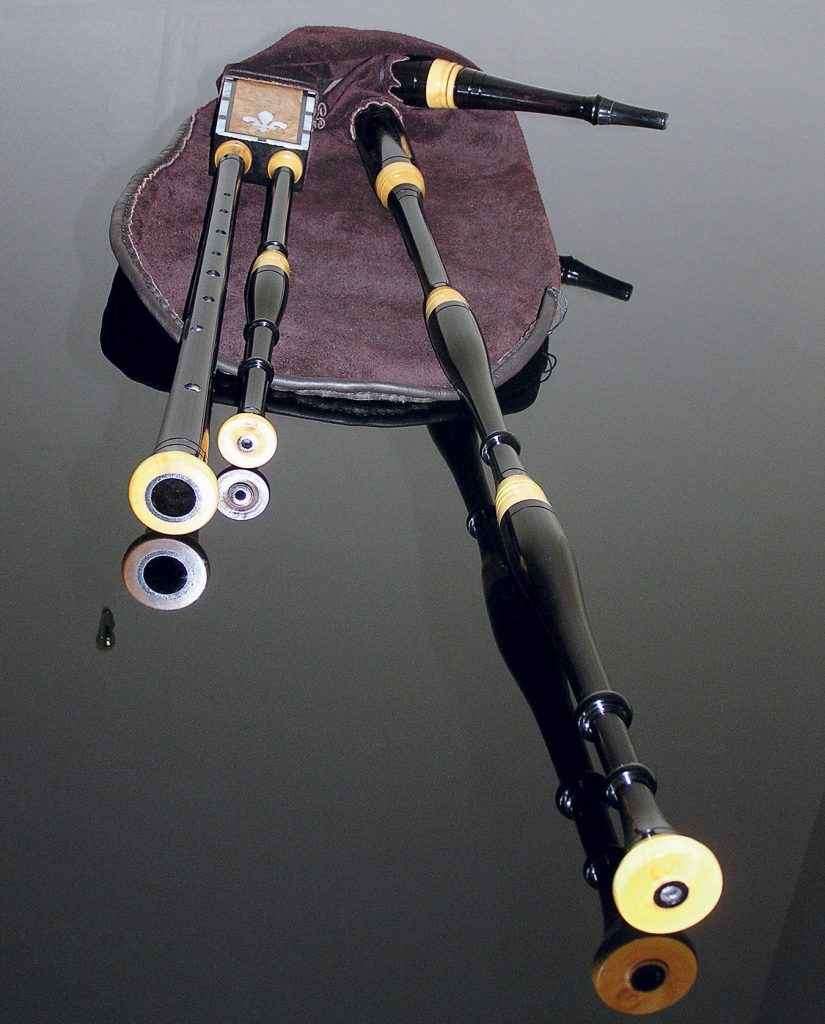The same technology that enables someone without pipes (say, Paris Hilton) to dabble in music-making, motivated Boris Favre to try his hand at making bagpipes. “I wanted to get away from the whole digital technology thing,” he says. “You spend so much time with emails and putting your website together—even recording is all digital now. I also wanted something visual, because with music, you play it and it’s gone.”
Favre plays his fair share of music. A classically-trained pianist holding both the A.R.C.T. Diploma form the Royal Conservatory of Music and a Bachelor’s degree in Music from U.B.C., he put himself through college teaching classes and gigging at lounges. In 1994, he picked up the bass to tour with the Vancouver-based Celtic-funk band Mad Pudding. Their folk festival circuit through North America and Europe exposed him to plenty of pipes and piqued his interest, but it wasn’t the ubiquitous and boisterous Great Highland Bagpipes, rather the rarer folk varieties: uilleann (or Irish), Swedish, and French pipes.
Instead of buying a ready-made set, which starts around $5,000, he opted to make one from scratch. “They were too expensive to find,” he says. “I got all sorts of conflicting information about them: ‘make sure you don’t buy this’ and ‘you’ll have to learn how to make your own reeds’ and ‘they’re really complicated to adjust.’ He budgeted $700 for equipment, but quips, “About $5,000 later I had the tools I needed.”
Just as learning to play the pipes isn’t a breeze, neither is making them. “It took about three or four years before I made anything playable that looked half decent,” he says. He wet his whistle on the uilleann—the hardest pipes to construct because of the amount of metal keys and tubing, and its seven pipes that need to harmoniously marry with seven reeds—loaning out a starter set from the British Columbia Uilleann Pipers’ Society to see how they work, and then spending time in Duncan with that set’s maker, Robert Moore, picking up tricks of the trade.
Ironically, the Internet played a role in him honing his craft and building his business. He found bagpipe forums where he could ask questions and connect with other amateur makers. After a builder in Texas, with whom he’d swapped instrument plans, posted one of Favre’s early Swedish pipes, orders started rolling in. He’s never advertised; he uploads pictures of his sets onto his site and Google search does the rest.
“You don’t just go to your local Rona. A lot I have to order on the Internet,” Favre says of sourcing his materials. In his small, ground-floor Kitsilano apartment-slash-studio, he keeps a quiver of dense, exotic woods used for the pipes’ chanters, drones, and, on the uilleann pipes, regulators—all of which he bores on a large lathe he stores at a friend’s garage. For each uilleann, a 150-hour process from start to finish, he shapes the tubes, using a bending tool he built himself, and brazes the brass keys. The chrome-tanned cowhide for the saddle-stitched bags he picks out in person at Pacific Leather on Commercial Street, or orders from Establo Leather in Guelph, Ontario; he searches the leather for imperfections such as mosquito bites and puts it to his mouth sucking on it to ensure it’s airtight.
The degree of accuracy for a conical bore is a 10,000th of an inch. Chiseling the delicate channels on a regulator, a chunk of wood can easily break off, and when it does some seven hours of labour and $50 of wood are for naught. Favre likens it to writing, “You just get lost in it; sometimes it can just eat up six hours and you don’t even know it went by. Other times your head starts to hurt and you know you’re starting to make mistakes. You have to pace yourself.”
Making instruments comes third to teaching at the Sarah McLachlan School of Music and playing in a myriad of bands, but Favre’s also added invention into the mix. “One of the ideas I have is to make a hybrid of all the pipes that I’m interested in,” he says, “I tried making something, but it’s not quite complete yet.” As soon as his Canadian bagpipes are ready, he’ll be sure to pipe up.









